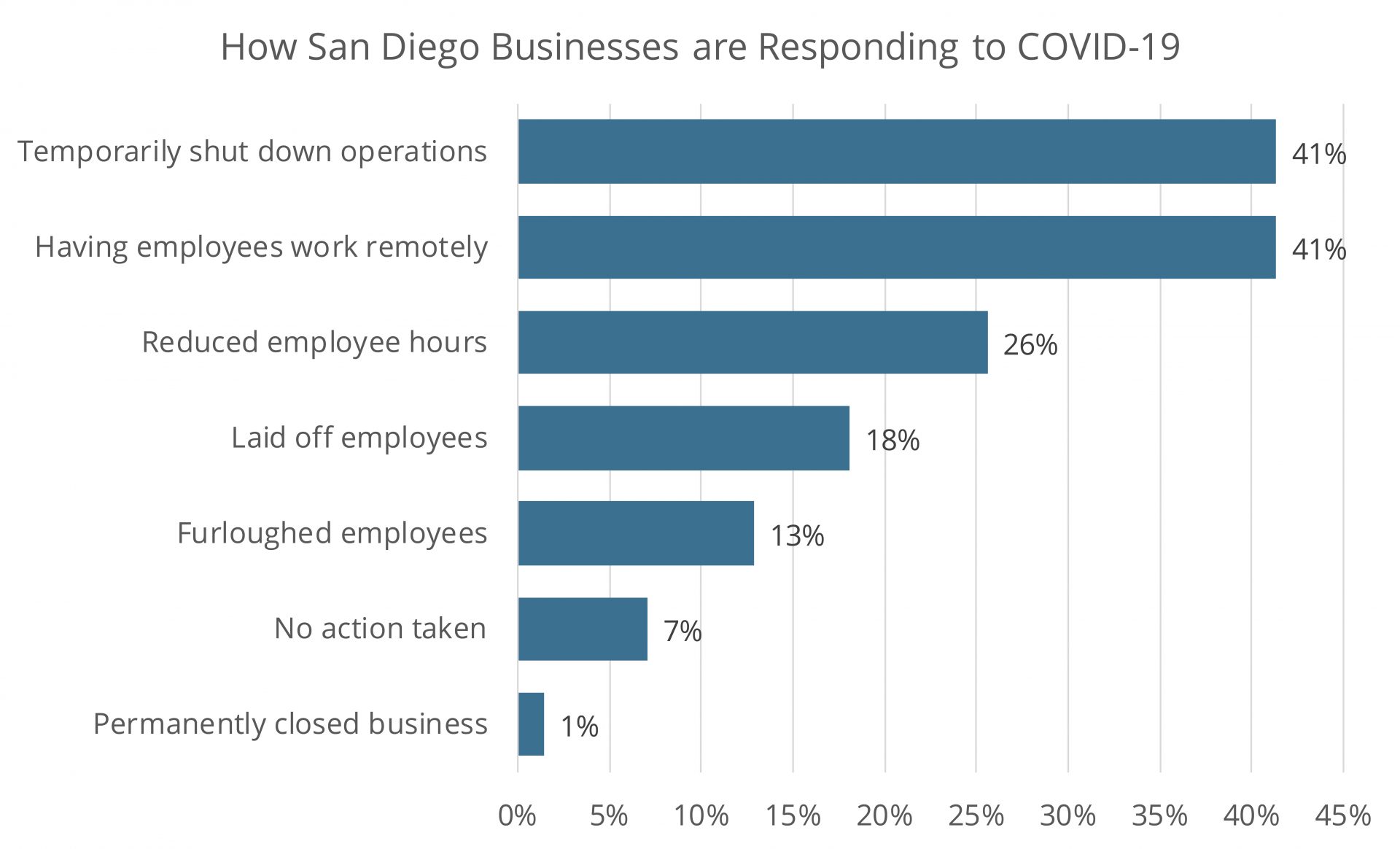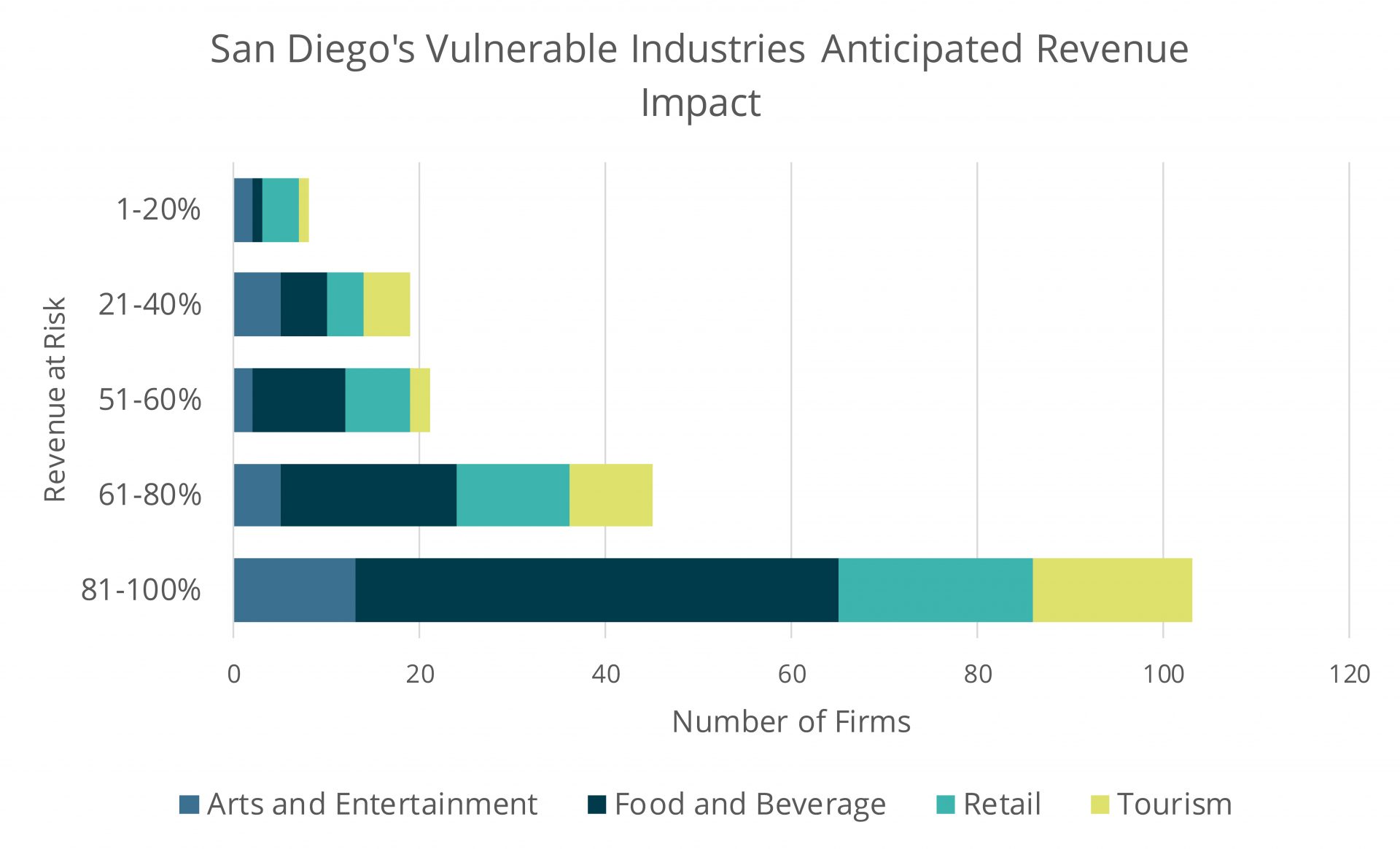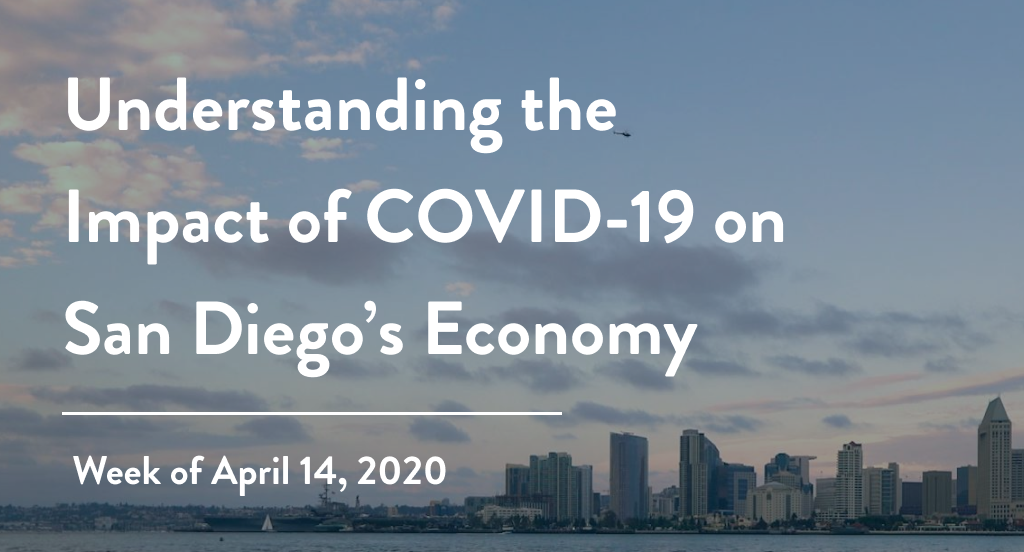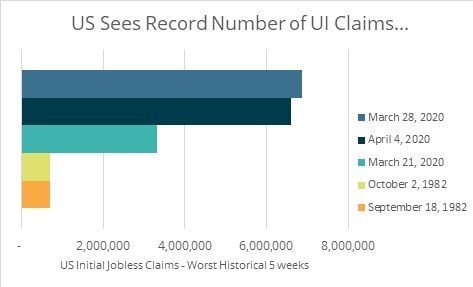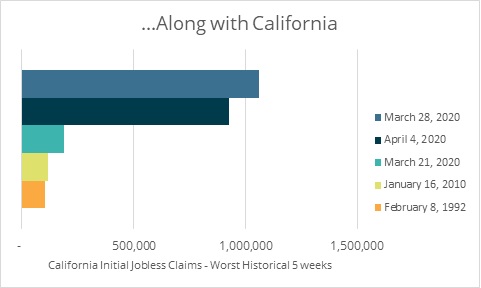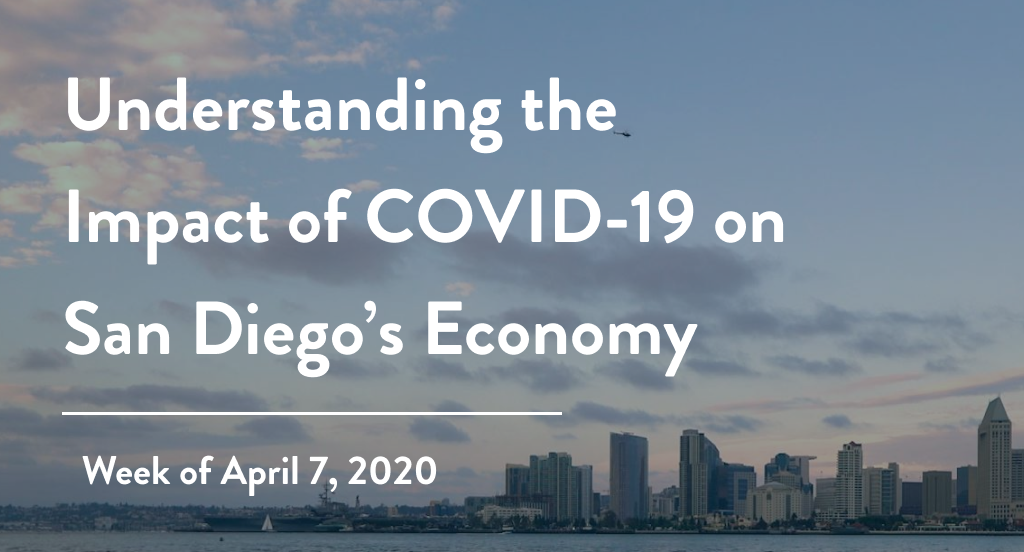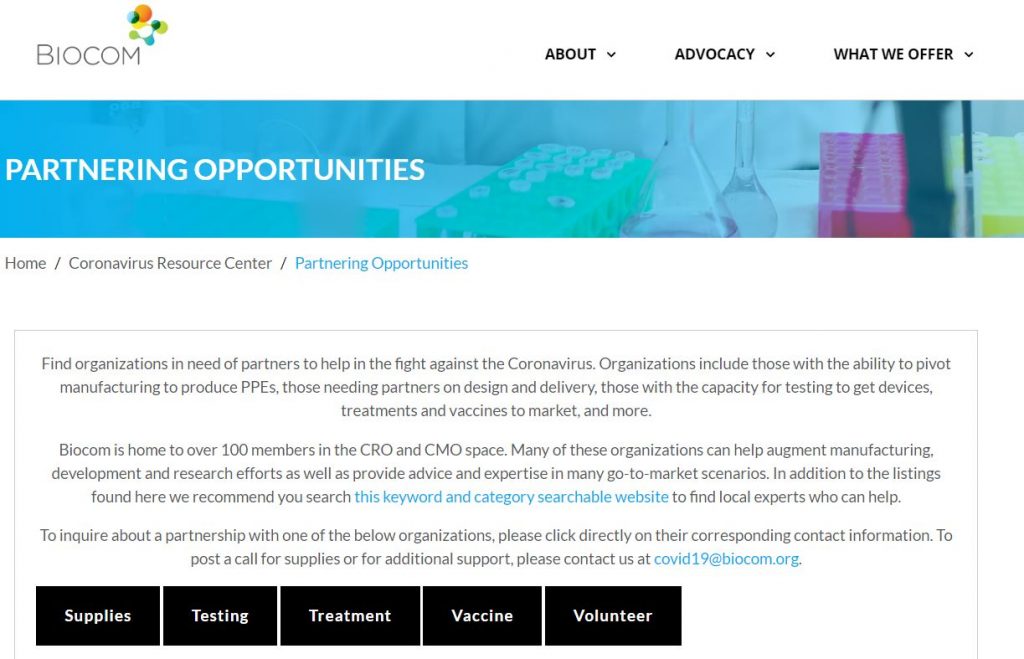We’ve seen and heard the unemployment numbers. But what does all of this really mean for our economic recovery in San Diego? Welcome to the ‘economy in crisis’ series – a bi-weekly breakdown of data at the national, state, and local level in the shadows of Covid-19.
San Diego’s economy remains on hold as efforts to contain the COVID-19 virus continue. Roughly 3.5 million Californians have filed for unemployment benefits since March, comprising 13% of the US total. The number of active unemployment insurance claims in California is already triple the peak experienced during the 2008-2009 Great Recession, and it’s likely that the unemployment rate in San Diego will easily surpass the 11.1% peak reached during that time.
The job market rout is yet to be captured in the official employment data. According to the most recent jobs report, San Diego shed just over 10,000 jobs in March. However, last month’s employment numbers understate the full extent of job losses.
The impact on vulnerable local industries has been studied and documented. However, industry disruptions beyond arts & recreation, retail, wholesale, and accommodation & food services are becoming apparent. Oil and energy-related companies and non-emergency healthcare providers have shared in the pain.
Businesses with strong ties to oil have only a small footprint in the region, so the steep slide in crude prices in recent weeks is not likely to reverberate too loudly throughout the local economy. However, the healthcare industry runs fairly deep, accounting for roughly one in 10 local jobs. Hospitals and doctors’ offices—which are in high demand as the number of Coronavirus diagnoses has increased—employ between 60,000 and 65,000 people, but that still leaves well over 100,000 at-risk positions. Moreover, an estimated 460 additional jobs are lost in other sectors for every 1,000 jobs lost in non-emergency healthcare. Making matters worse is that employment estimates are notoriously unreliable during times of stress, and it could take months of data revisions before an accurate picture of the job market emerges.
building a stronger, more inclusive San Diego
Despite the immense pain and stress this downturn has caused, the coming recovery presents a prime opportunity to rebuild San Diego’s economy in a more inclusive, equitable way. A path can be built to link workers to training programs to prepare them for careers in industries that are struggling to fill open positions that pay considerably better and typically provide benefits. For example, health diagnostics and treatment occupations accounted for six times the share of job postings than total hires between 2016 and 2020, implying a severe shortage of qualified applicants. This is not isolated to just STEM-based positions, either; a similar trend has emerged for advertising, marketing, promotions, public relations, and sales managers.
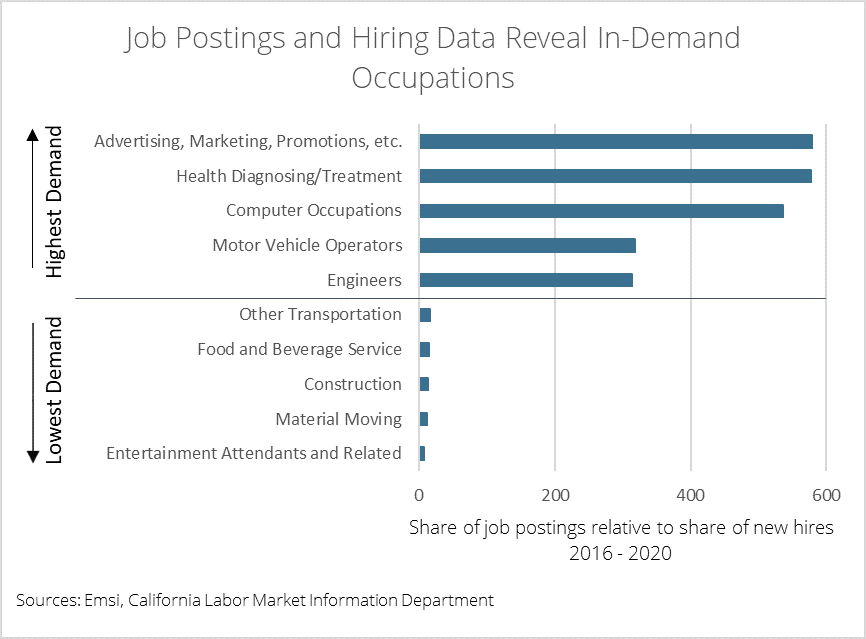
According to Emsi, there was a 21% reduction in job postings over the past 30 days, including for the high-demand occupations listed above. Company hiring – or job postings – is expected to fall further before the crisis ends. By looking at the imbalance of labor demand in the market, we can help shepherd workers toward occupations struggling to find talent. When viewed through a demand lens, we can take a targeted approach to develop training programs that may leave thousands of San Diegans better off than they were before the COVID-19 outbreak.
An Opportunity for Small Business Success
This recovery will also provide a chance to focus on small business formation and success among women and people of color who, historically, have been marginalized and received less access to startup capital. Nearly 96% of San Diego companies employ fewer than 50 workers and 61% employ fewer than 10 people, making this an especially important initiative to undertake.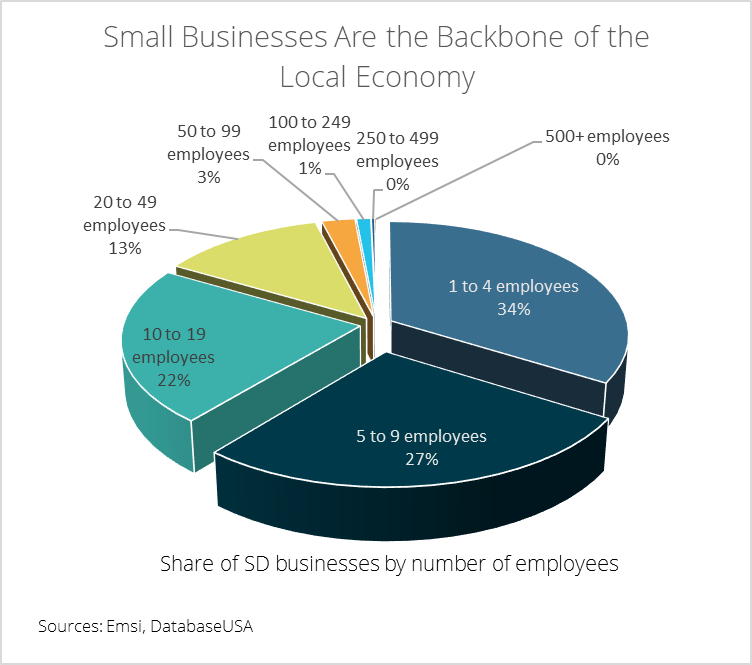
The “when” of the recovery remains a huge question mark, but the “how” of the recovery is coming into focus. EDC’s mission is to maximize prosperity within the region, and the opportunity to build a stronger, more resilient San Diego has arguably never been better than it is right now.
COVID-19 Recovery Resources
Regardless of how this all plays out, EDC is here to help. You can use the button below to request our assistance
For general COVID-19 recovery resources and information, please view this page.
You also might like:
- An In-Depth Look at San Diego’s Small Business Ecosystem
- Economy in crisis: unemployment claims at a record high, as SD looks to minimize virus spread
- COVID-19 Survey Results: Impacts are vast, amidst signs of resiliency
- COVID-19 Survey Results: Revenue impacts continue, but most firms favor temporary shutdowns over permanent closures
